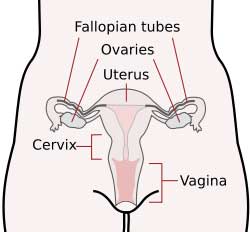Introduction / Summary (2018): Hello and welcome to our Sexuality pages. While this is not a pornographic site, it is provocative - founded upon what people search on the Internet (which is very interesting!). We then relate this to our biological and cultural evolution.
Sex is obviously important to people - and if you want to improve your sexual relationships then knowing the truth about our human evolution is the best foundation. By opening our minds to a greater diversity of behaviors, this knowledge will help you creatively cultivate healthy pleasurable moral attitudes and sexy smutty relationships (free from religious guilt & cultural myths).
Support an open honest discussion on the truth of our sexual evolution and behaviour. If you support sex positive, moral, informed sexual behaviour please share this knowledge. (These pages have a diverse collection of fascinating information relating to our human sexual evolution so people will appreciate it - see our 'nice letters' page!).
Sincerely, Karene.
"It is not enough to conquer; one must learn to seduce." (Voltaire) - "Desire is the essence of a man." (Spinoza)
The Cervix
Female Anatomy, Health & Education. Information, Pregnancy,
Cervical Dilation, Pictures
Quotes from 'The Story of V: A Natural History of Female Sexuality' by Catherine Blackledge
 'In
modern medical terminology, 'cervix' is understood as meaning the short,
thick tube of smooth muscle which surrounds the narrow channel (the endocervical
canal) which leads from the vagina through to the uterus. The lower end
of the cervix dips into the vaginal chamber, and is called the external
os (opening, or mouth), while the upper uterine end of the cervix is known
as the internal os. The intimate connection between the cervix and the uterus
is highlighted in the full title of the cervix, the cervix uteri, which
means the neck of the womb or neck of the uterus.' (Blackledge, p. 64, 2004)
'In
modern medical terminology, 'cervix' is understood as meaning the short,
thick tube of smooth muscle which surrounds the narrow channel (the endocervical
canal) which leads from the vagina through to the uterus. The lower end
of the cervix dips into the vaginal chamber, and is called the external
os (opening, or mouth), while the upper uterine end of the cervix is known
as the internal os. The intimate connection between the cervix and the uterus
is highlighted in the full title of the cervix, the cervix uteri, which
means the neck of the womb or neck of the uterus.' (Blackledge, p. 64, 2004)
'Curiously though, the word cervix does not mean neck. Collum is the Latin for neck. The source of the word cervix lies, surreally, in the curving, cresent-shaped horns of many mammals. And curiously, although this horn meaning was somehow lost in human anatomical vocabulary, it survives today in animal physiology. A cervid is any ruminary mammal of the class Cervidae, mammals that are characterised by the presence of horns or antlers.' (Blackledge, p. 64, 2004)
'The conception of the Fallopian tubes as horns of the uterus is easily understood. A look at any modern illustration of a woman's uterus reveals the source of the idea. Fallopian tubes do trace a graceful horn-like curve, and are positioned in conjunction with the uterus in such a way that it's not too fanciful to see them as mirroring the horns and antlers of deer or bulls.' (Blackledge, p. 65, 2004)
Evolution, Human Reproduction & Fertilization: Sperm, the Penis & Cervix
A very interesting essay from the journal of Evolutionary Psychology on evolutionary strategies in humans for successful fertilization.
From the essay: 'Magnetic resonance imaging studies show that during coitus, the typical penis fills and expands the human vagina, and with complete penetration often pushes up against the cervix. When ejaculation occurs, thrusting diminishes and vaginal penetration reaches its maximum point (Masters and Johnson, 1966). Not only does this serve to release semen in close proximity to the cervix, but data on ejaculatory pressure shows that the first several ejaculatory contractions project seminal fluid with such force that it can be expelled at a distance of 30-60cm if not contained in a vagina (Masters and Johnson, 1966). Thus, there appear to have been a series of adaptations that serve to confine or focus the release of semen to the uppermost portion of the vaginal tract, possibly as a means of making it less vulnerable to displacement by other males. A longer penis would not only have been an advantage for leaving semen in a less accessible part of the vagina, but by filling and expanding the vagina it also would aid and abet the displacement of semen left by other males as a means of maximizing the likelihood of paternity.'
By Gordon G. Gallup, Jr., Department of Psychology, State University
of New York at Albany, Albany, NY 12222, USA.
Rebecca L. Burch, Department of Psychology, State University of New York
at Oswego, Oswego, NY 13126, USA.
Read More: Evolution, Human Reproduction & Fertilization: Sperm Competition, Semen Displacement & Penis
 Analyse
any human emotion, no matter how far it may be removed from the sphere of
sex, and you are sure to discover somewhere the primal impulse, to which
life owes its perpetuation. ... The primitive stages can always be re-established;
the primitive mind is, in the fullest meaning of the word, imperishable.
... Mans most disagreeable habits and idiosyncrasies, his deceit, his cowardice,
his lack of reverence, are engendered by his incomplete adjustment to a
complicated civilisation. It is the result of the conflict between our instincts
and our culture. (Sigmund Freud)
Analyse
any human emotion, no matter how far it may be removed from the sphere of
sex, and you are sure to discover somewhere the primal impulse, to which
life owes its perpetuation. ... The primitive stages can always be re-established;
the primitive mind is, in the fullest meaning of the word, imperishable.
... Mans most disagreeable habits and idiosyncrasies, his deceit, his cowardice,
his lack of reverence, are engendered by his incomplete adjustment to a
complicated civilisation. It is the result of the conflict between our instincts
and our culture. (Sigmund Freud)
Create some good Sexual Karma - Share this Knowledge - Thanks!
| Tweet |
Support an open honest discussion of human sexuality by sharing this knowledge.
https://www.sexualevolution.org/cervix.htm
Female Anatomy, Health & Education: The Cervix.
Information, Pregnancy, Cervical Dilation, Pictures
Site
Map - Banners
- Bibliography
/ Reference Books - Reasons
for this Sexuality Study - Legal
Disclaimer & Privacy Policy - Protect
Children Online
![]()
![]()

